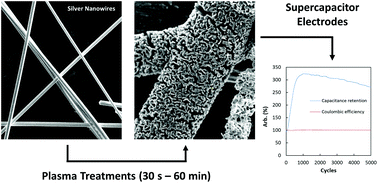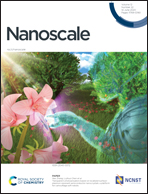Generation of highly porous silver nanowire networks by plasma treatment and their direct application as supercapacitor electrodes†
Abstract
Exposure to plasma can significantly increase the surface area of silver species and their resistance to oxidation. While some work investigating plasma-treated silver has been done, limited morphologies and applications have been explored. We hereby explore this effect on silver nanowires (AgNWs) through medium-vacuum air plasma exposure time ranging between 30 s to 60 min. These plasma-treated AgNW networks are directly applied as supercapacitor electrodes, without any carbon or polymer additives that are typically employed alongside silver in energy storage applications. The plasma treatment consequently affected the electrochemical performance of AgNWs, where longer treatment times resulted in higher energy storage capacity. An increase in resistance was observed for plasma treatment times greater than or equal to 5 min, due to the switch from the percolation threshold of the metallic Ag phase to the Ag2O phase. Despite an initial drop in stored energy, an overall improvement in energy storage capacity was observed throughout cycling, where the optimal plasma treatment time of 5 min resulted in an increase of 320% of its starting value with near 100% coulombic efficiency, through the development of stable redox-active surface nanostructures.



 Please wait while we load your content...
Please wait while we load your content...